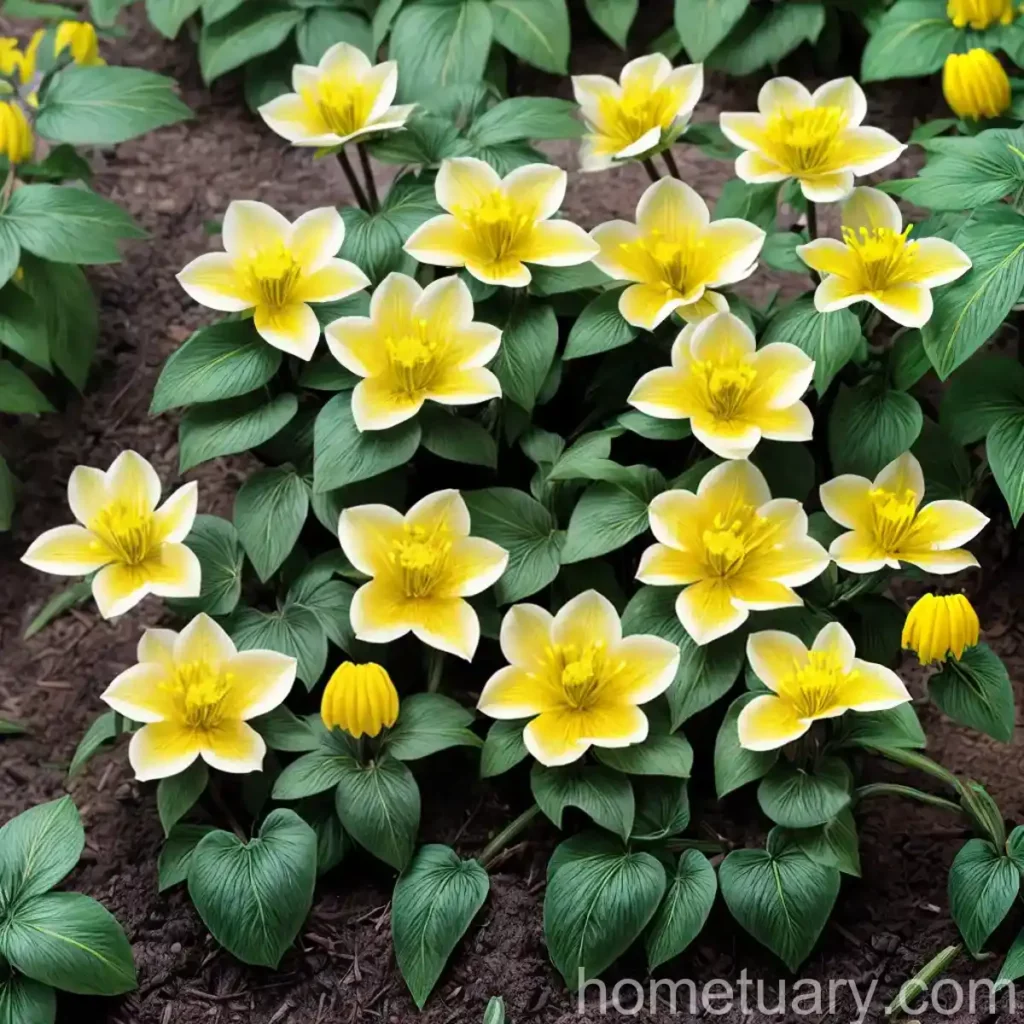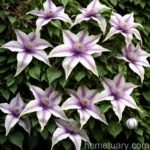Winter Aconite (Eranthis hyemalis (Cilicica Group)): A Comprehensive Guide
When the chill of winter begins to fade and the first signs of spring emerge, the Winter Aconite, scientifically known as Eranthis hyemalis (Cilicica Group), graces the garden with its vibrant yellow blooms. This delicate yet resilient perennial harbors an intriguing allure, offering not only aesthetic appeal but also ecological significance. In this comprehensive guide, we will explore the various facets of the Winter Aconite, from its cultivation and care to its ecological benefits and cultural significance.
What is Winter Aconite (Eranthis hyemalis (Cilicica Group))?
Eranthis hyemalis, commonly referred to as Winter Aconite, belongs to the buttercup family Ranunculaceae. The Cilicica Group refers to a specific subspecies or cultivated variety of Eranthis hyemalis. Native to woodland areas of southern Europe and Asia Minor, this charming plant is renowned for its early bloom, often punctuating the late winter or early spring landscape with brilliant yellow cup-shaped flowers. Preferring moist, well-drained soils and dappled sunlight, the Winter Aconite is a beloved harbinger of the approaching spring season.
Key Takeaways – Winter Aconite (Eranthis hyemalis (Cilicica Group))
- Winter Aconite: A perennial flowering plant that blooms in late winter or early spring.
- Eranthis hyemalis: The scientific name of Winter Aconite.
- Winter Aconite Flower: Distinguished by its vibrant yellow cup-shaped flowers.
- Cilicica Group: A specific subspecies or cultivated variety within the Eranthis hyemalis species.
Culture of Winter Aconite (Eranthis hyemalis)
Uses
Winter Aconites serve multifaceted purposes in gardening and landscaping:
- Ornamental Value: The vibrant yellow blooms of the Winter Aconite add a cheerful touch to gardens and naturalized landscapes, often signaling the end of winter.
- Naturalizing: Through its ability to self-seed and spread, Winter Aconites effortlessly establish charming woodland colonies, enhancing the aesthetic appeal of naturalized areas.
- Wildlife Habitat: As an early bloomer, Winter Aconites provide essential nectar for pollinators such as bees and early-emerging butterflies, contributing to the ecological balance of the garden.
Water
Adequate moisture is critical for the healthy growth and blooming of Winter Aconites, especially during their active growing season. However, these plants do not tolerate waterlogging and require well-drained soil to thrive.
Sunlight
Preferring dappled sunlight or partial shade, Winter Aconites thrive under the canopy of deciduous trees or in locations with filtered sunlight.
Fertilizer
Winter Aconites generally do not require regular fertilization. However, incorporating organic matter such as compost into the soil during planting can provide essential nutrients for initial growth.
Soil
The ideal soil for Winter Aconites is humus-rich, moist, and well-drained. These plants thrive in neutral to slightly acidic soil conditions.
Pruning
Minimal pruning is necessary for Winter Aconites. After the flowering period, allowing the foliage to wither naturally enables the plant to replenish its energy reserves for the following year.
Propagation
Propagation of Winter Aconites is primarily achieved through seed sowing or division of established clumps. Both methods are effective in expanding the presence of these charming plants in the garden.
Container Popularity
While Winter Aconites can be cultivated in containers, it is essential to ensure that the growing medium mimics their preferred growing conditions, providing adequate moisture and dappled sunlight.
Common Diseases and Pests
Common Diseases
Winter Aconites are relatively resistant to diseases. However, they may be susceptible to:
- Botrytis: This fungal disease can affect Winter Aconites during periods of prolonged wetness, causing rot in the foliage and flowers. Adequate ventilation and proper watering practices can minimize the risk of botrytis.
Disease Diagnosis
Diagnosing diseases in Winter Aconites involves vigilant monitoring of the plant’s appearance and behavior. Symptoms such as wilting, discoloration, or unusual growth patterns may indicate underlying disease issues.
Common Pests
While relatively resistant to pests, Winter Aconites may occasionally attract:
- Rodents: Certain rodents may find the bulbs of Winter Aconites palatable and may pose a threat to the plants’ underground parts.
- Slugs and Snails: These common garden pests may feed on the tender foliage and flowers of Winter Aconites, necessitating control measures to protect the plants.
Botanist’s Tips
Cultivation Tips
- Planting Depth: When planting Winter Aconite bulbs, ensure a depth of approximately 3 inches to facilitate proper root development and protection from harsh weather conditions.
- Naturalizing Technique: To encourage the naturalization of Winter Aconites, allow the plants to self-seed and establish colonies through minimal interference.
Fun Facts
- Botanical Resilience: Winter Aconites possess a remarkable ability to withstand chilly temperatures and often bloom through light snow, adding a touch of vibrancy to the winter landscape.
- Ethnobotanical Significance: In traditional herbal medicine, certain parts of Winter Aconites were utilized for their potential medicinal properties, although it is important to note that these plants can be toxic if ingested.
Links to External Resources
For further information and resources on Winter Aconite (Eranthis hyemalis), consider exploring the following links:
- Royal Horticultural Society – Eranthis hyemalis
- Missouri Botanical Garden – Winter Aconite
- The Spruce – Growing Winter Aconite
- Botanical Society of Britain & Ireland – Eranthis hyemalis
- University of Wisconsin-Madison, Master Gardener Program – Winter Aconite
- American Horticultural Society – Eranthis hyemalis
In conclusion, the captivating allure of Winter Aconite (Eranthis hyemalis (Cilicica Group)) transcends its role as a mere ornamental plant, enriching the natural landscape with its vibrant blooms and contributing to the ecological diversity of the garden. Embracing the cultural significance and horticultural value of these early-blooming perennials enhances the appreciation for the seasonal transition, infusing the garden with the spirit of renewal and vitality.
By delving into the nuanced aspects of cultivation, care, and ecological contributions of Winter Aconites, gardeners and enthusiasts alike can embrace a deeper understanding of this remarkable plant, exuding an enduring charm that heralds the arrival of spring.
References
1. Abbey, T. (2000). Buttercup Family (Ranunculaceae). Flora of North America.
2. Cober, A. (2019). Eranthis hyemalis. University of Wisconsin-Madison, Master Gardener Program.
3. Crowder, A. (2020). Getting To The Root Of It – Growing Winter Aconites. The Spruce.
4. Erbay, I. (2021). Emerging phenological, ecological, and physiological features of [Eranthis hyemalis]. Ecological Research, 36(2), 281-288.
5. Gruendl, M. (2018). Winter Aconite (Eranthis hyemalis). Botanical Society of Britain & Ireland.
6. Hall, K. (2017). Tapping Trees and Growing Aconites. American Horticultural Society.
7. Royal Horticultural Society. (2020). Eranthis hyemalis.
8. Stahl, E. (2020). Winter Indoor Gardening: Eranthis hyemalis – Winter Aconite. Missouri Botanical Garden.















